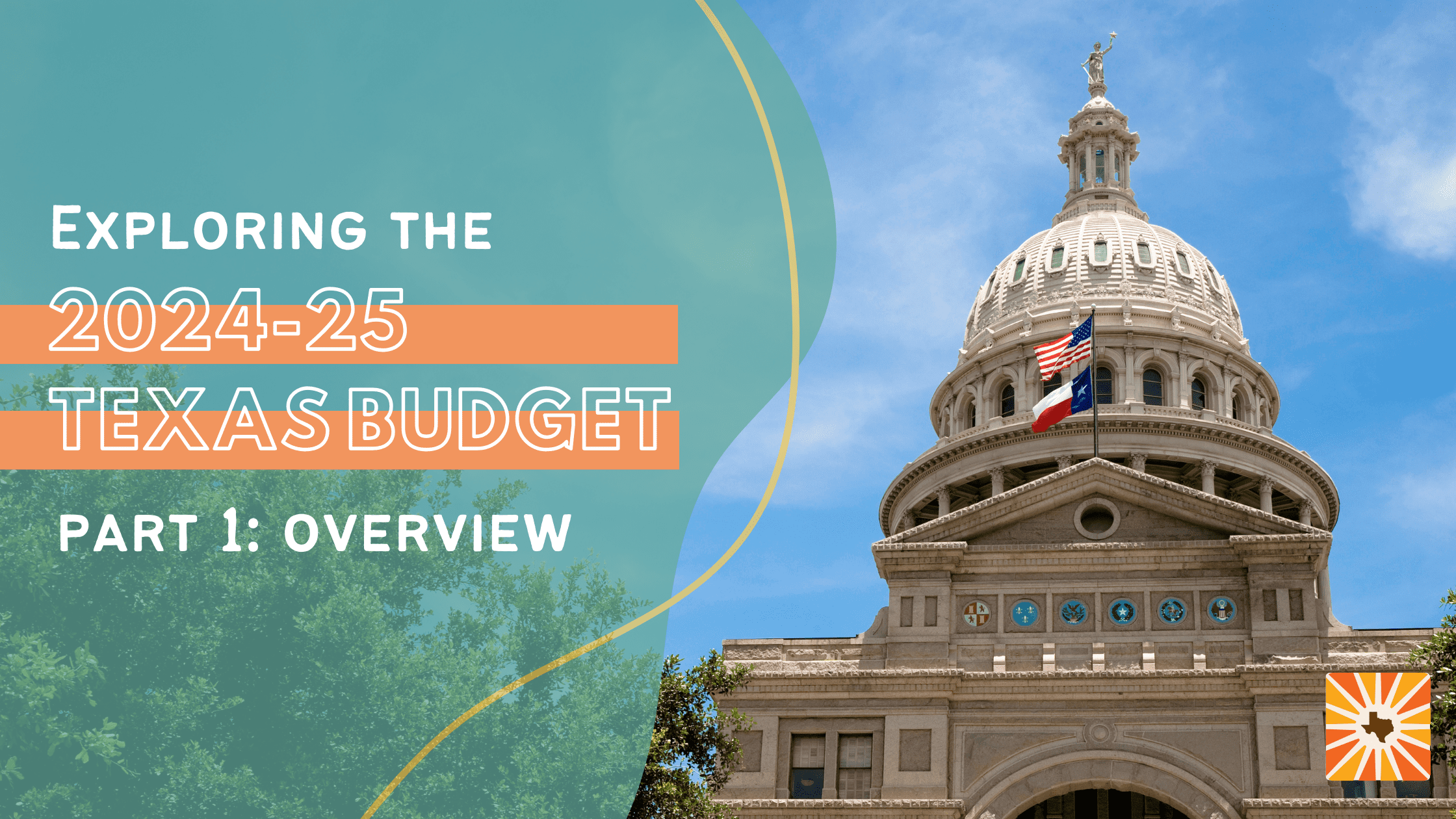The state budget is the only bill the Legislature must pass each session. Every two years, legislators decide how to allocate our tax dollars to the services and infrastructure that allow us to thrive. Governor Abbott signed the 2024-25 General Appropriations Act into law on June 18, making it the effective state budget from Sept. 1, 2023, through Aug. 31, 2025.
Thanks to robust economic growth, sales tax revenue, strong energy prices, and high inflation, the Legislature began the session with $188.2 billion in general revenue to distribute. That figure included a record-high, positive balance of $32.7 billion left over from the last biennium. On top of that, the state’s Economic Stabilization Fund (the rainy-day fund) held another $23.5 billion.
Every Texan saw this large carryover balance as a rare opportunity to make long-overdue investments in public education, health care, and other urgent needs. And while lawmakers allocated modest boosts in health care and infrastructure, they prioritized massive and unsustainable property tax cuts that will likely threaten the long-term health of our schools.
Alongside the budget, the Legislature also passed the supplemental appropriations bill (SB 30) to cover unforeseen expenses in the 2022-23 biennium. This budget analysis includes some items from the supplemental bill as well. This series will first provide an overview of this biennium’s budget, then specifics on health care, education, property tax cuts, and other items of note.
The Big Picture
From Sept. 1, 2023, to Aug. 31, 2025, the General Appropriations Act budgets approximately $321 billion from all funds and $144 billion from general revenue (GR). Distinct from dedicated, federal, or other smaller funds, GR is the largest fund for general-purpose spending; it’s the money the Legislature has the most control over.
As usual, Education and Health and Human Services (HHSC) remain the two largest components of the budget. Together, GR spending on public (K-12) education and higher education made up about half the total (Figure 1).

By comparison, the last biennium’s budget dedicated about $130 billion in general revenue and $303 billion in all funds. The 2024-25 budget shows around 10% and 6% increases respectively when compared to the last budget. However, the last two years’ inflation – the highest in 40 years – makes that spending increase appear much larger than it actually was. After adjusting for inflation and the state’s rapidly increasing population, the spending boost from COVID-related federal funds beginning in 2020 flattened considerably (Figure 2).
Yet again, the Legislature has failed to remedy the state’s chronic underinvestment in our people.

Every Texan’s Priorities
Before the 88th Legislature began, we detailed our legislative priorities in our Policy Roadmap for a Just and Equitable Texas, organized into six policy areas: Health Care, Food Justice, Education, Worker Power and Supporting Families, Fair Taxation, and Voting Rights.
When House and Senate members met to finalize the budget in May, Every Texan submitted a letter emphasizing the importance of making equitable investments to help Texas’s public schools, workers, and low-income residents.
In this Texas Budget series, Every Texan is exploring the highs and lows of the 2024-25 State Budget by policy area.
Read the full report here.
